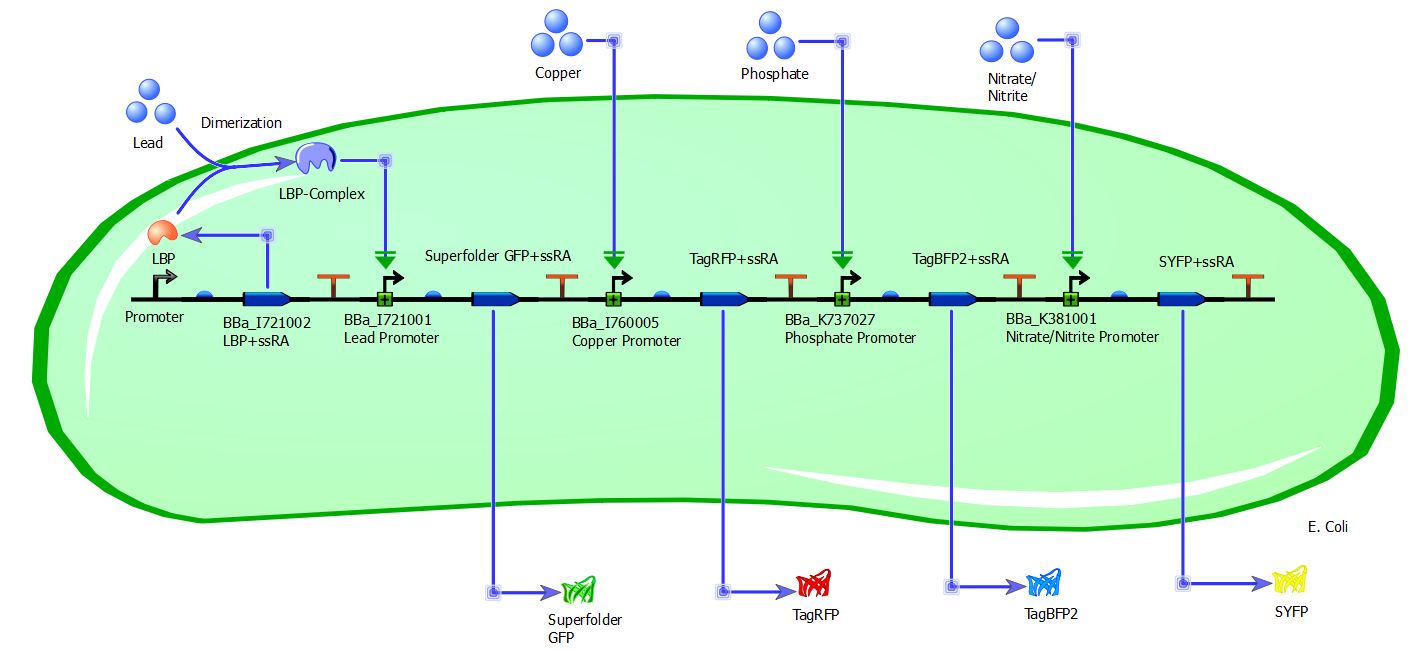Team:NC School of Sci Math
From 2013hs.igem.org
Home Team Project Details Lab Notebook Results Human Impact Biosafety Acknowledgments Official Team Profile
Executive Summary
Biosensors provide a wide variety of applications, particularly analyte detection in the environment. Positive results in biosensors lead to the output of a reporter, commonly in the form of fluorescent proteins. Here we construct a biosensor that is capable of indicating the presence of various pollutants in water through expression of several different fluorescent proteins. We selected lead, copper, phosphate, and nitrate/nitrite promoters and paired them with specific reporter coding sequences. Presence of these ions drives the transcription of specific fluorescent proteins. Detection of these proteins is enabled through a light detection apparatus and the information can be sent to mobile devices in a user-friendly interface via a modified Google ADK. This novel multibiosensor can be implemented to detect pollutants in sewer systems, septic tanks, and other sources of water, and provide and early-detection warning system, preventing the pollutants from causing serious harm to equipment, animals, or people.
The goal of this project, therefore, was to develop a multi-input logic gate in Escherichia Coli, which can detect the presence of a number of environmentally degrading compounds, and for each, produce a unique colorimetric output. We applied some principles of electrical engineering by using a Google ADK to sense this colorimetric output and send an alert. We envision that for an end-user, our elegant synthetic biology solution will allow a homeowner to easily and effectively be notified of the need for inspection of their septic system. The product has applications in water quality tests, sewage treatments plants, and in industry where the presence of pollutants could be harmful to equipment, workers, or consumers.
 "
"




